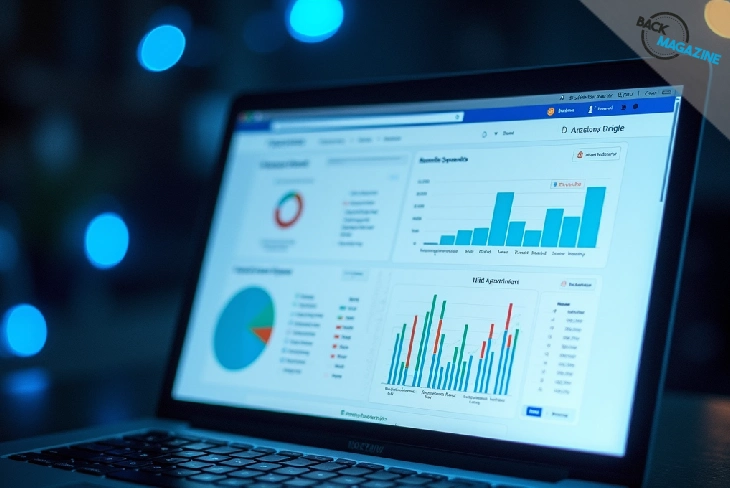Wondering how Facebook keeps raking in billions while keeping you hooked? This article dives into the Social Network Financials Interface-Design.net Facebook, exploring how its massive 2024 revenue of $164.5 billion ties into smart interface design. We’ll break it down into bite-sized chunks: a quick financial rundown, why design matters, and how it quietly boosts the bottom line. Expect clear stats, everyday examples, and a peek at what makes Facebook’s user experience a money-making machine—all without the fluff.
Financial Snapshot
Facebook’s cash register rang loud in 2024, pulling in $164.5 billion in revenue—a hefty 22% jump from 2023. That’s Meta Platforms, Inc.’s report card, and it’s mostly thanks to the Family of Apps (FoA), which includes Facebook, Instagram, Messenger, and WhatsApp. These apps hauled in 99% of that total, with ad dollars fueling the fire. Plus, daily active users hit 3.35 billion by December, up 5%, showing more people than ever are scrolling, liking, and clicking.
But it’s not just about big numbers. Ad impressions climbed 11% for the year, and the average price per ad rose 10%. In Q4 alone, those figures spiked to 6% and 14%. Meanwhile, the Reality Labs side—think VR goggles—barely chipped in 1-2%. So, the Social Network Financials Interface-Design.net Facebook story is clear: it’s the social side that pays the bills, and it’s growing fast.
Why Design Counts
Imagine Facebook as a giant digital playground. Interface design is the swings, slides, and benches—everything that keeps you playing longer. It’s about making the site easy to use and nice to look at, so you don’t log off. For the Social Network Financials Interface-Design.net Facebook, a smooth layout or a bright blue button can mean more time spent, which means more ads seen.
Take the 2011 Timeline update. It turned profiles into a scrapbook, letting you scroll through someone’s life story. Users stuck around longer, and that’s gold for ad revenue. Good design isn’t just pretty—it’s a quiet worker bee, buzzing behind the scenes to keep the platform sticky and profitable.
Sometimes, it’s the little things. The “Like” button, for instance, isn’t just a thumbs-up—it’s a nudge to keep you engaged. Studies say intuitive designs lift retention rates, and for a social network living off ad clicks, that’s a direct line to the bank.
Cash from Clicks?
So, how does interface design turn into dollars for the Social Network Financials Interface-Design.net Facebook? It’s all about keeping you hooked. More time on the app equals more chances for ads to pop up. The 2011 Timeline didn’t come with a price tag saying “$X earned,” but it likely bumped up user sessions. And with 3.35 billion daily users in 2024, even a tiny uptick in engagement is a big win.
Mobile matters too. Most folks hit Facebook from their phones, so redesigns focus there—like cleaner menus or faster load times. A 2020 update stirred some grumbles, but it pushed privacy controls front and center, possibly keeping trust (and users) intact. Indirectly, that supports the ad machine. Design’s not the star—it’s the assist player passing to revenue.
Sneaky Design Wins
Here’s a curveball: tiny tweaks can pack a punch. The “Like” button? It’s a breadcrumb trail—click it, and you’re scrolling deeper. That’s the Social Network Financials Interface-Design.net Facebook at work, using design to nudge behavior without you noticing. More scrolling means more ad views, and 2024’s 11% ad impression hike proves it’s working.
Or consider comment bubbles borrowed from Messenger. They make chats pop, keeping you in the convo. It’s subtle, but it boosts interaction. Some call it “dark patterns”—tricks to keep you glued—but whatever the label, it’s a revenue booster. Design’s power isn’t always loud; it’s often a whisper that pays off big.
Design Done Right
What’s the playbook for killer interface design? Keep it simple, for starters. Cluttered screens scare users off, but a clean layout—like Facebook’s pastel blue vibe—invites them in. Consistency’s key too. Whether you’re on phone or desktop, it should feel familiar, so you’re not fumbling around. That’s part of the Social Network Financials Interface-Design.net Facebook success.
And don’t sleep on speed. A laggy app is a ghost town—users bounce fast. Facebook’s team tweaks performance nonstop, cutting wait times to keep you engaged. Add in accessibility—like bigger text for all eyes—and you’ve got a recipe for sticking around, which advertisers love.
Feedback’s another gem. Facebook rolls out updates, listens to gripes, and adjusts. That back-and-forth keeps the interface fresh and user-friendly. It’s not rocket science—just practical moves that tie design to dollars.
Wrap-Up
The Social Network Financials Interface-Design.net Facebook isn’t a mystery—it’s a powerhouse blending big money and smart design. With $164.5 billion in 2024 revenue and 3.35 billion daily users, Facebook’s financials lean hard on keeping folks engaged. Interface design’s the unsung hero, making the platform easy, fun, and sticky, all while feeding the ad cash cow. From Timeline to “Like” buttons, it’s clear: good design isn’t just looks—it’s a profit driver. Stick to simple, fast, and user-first principles, and the numbers keep climbing.

